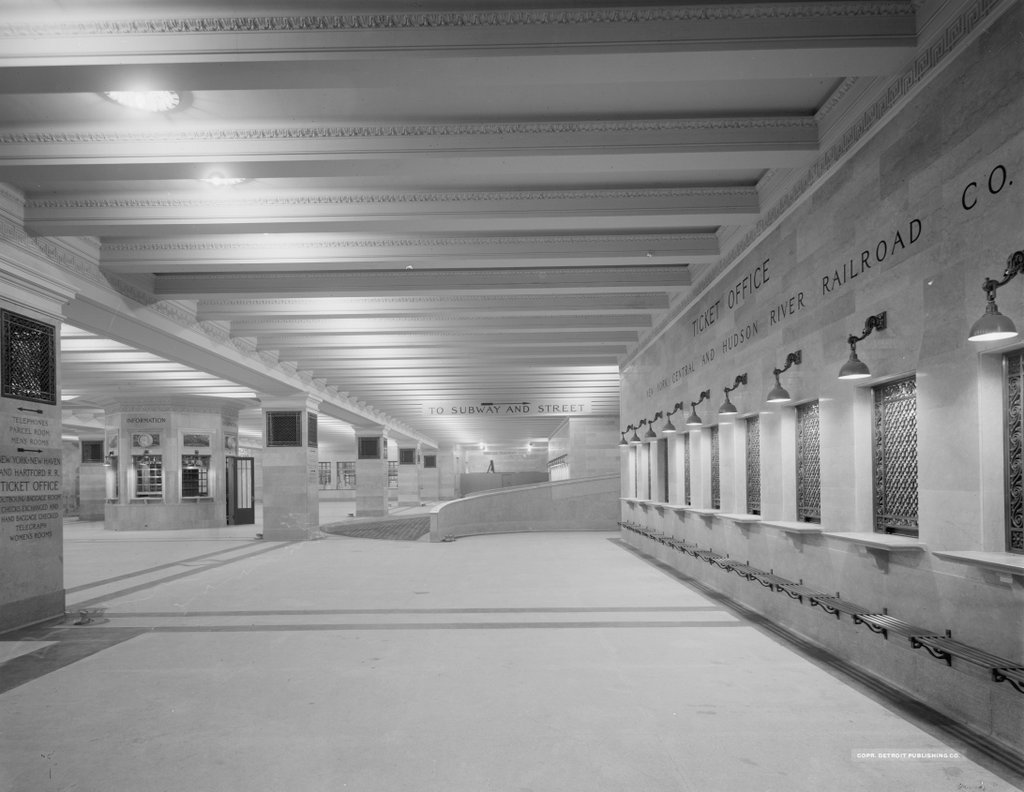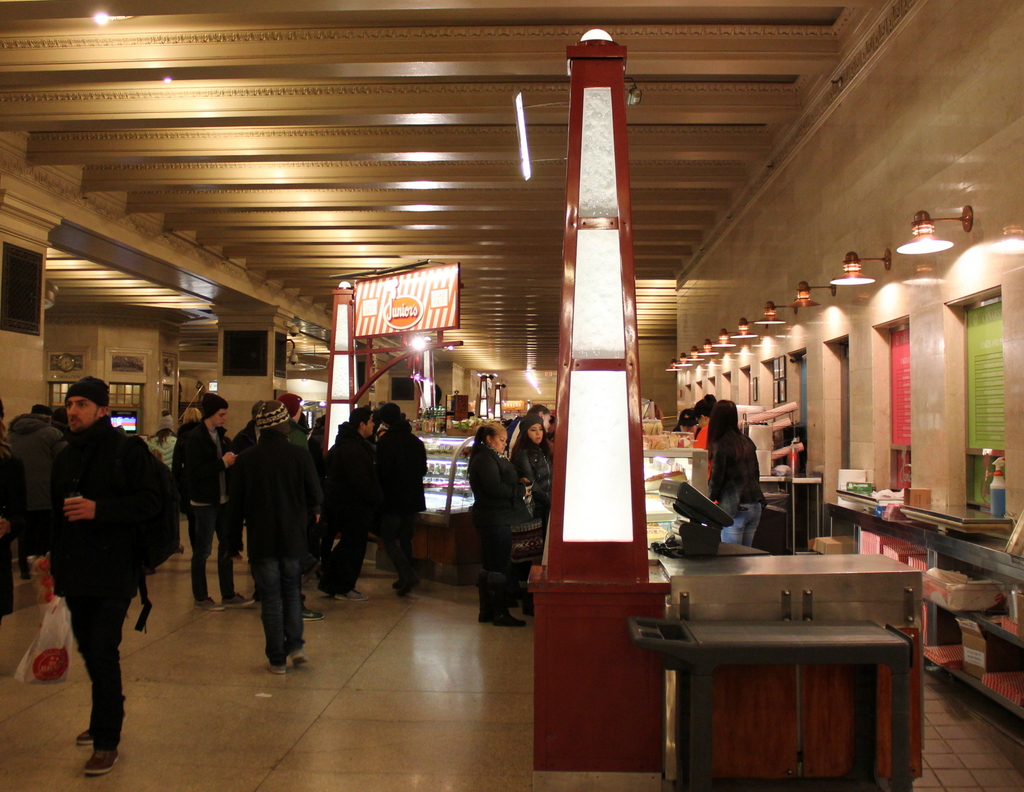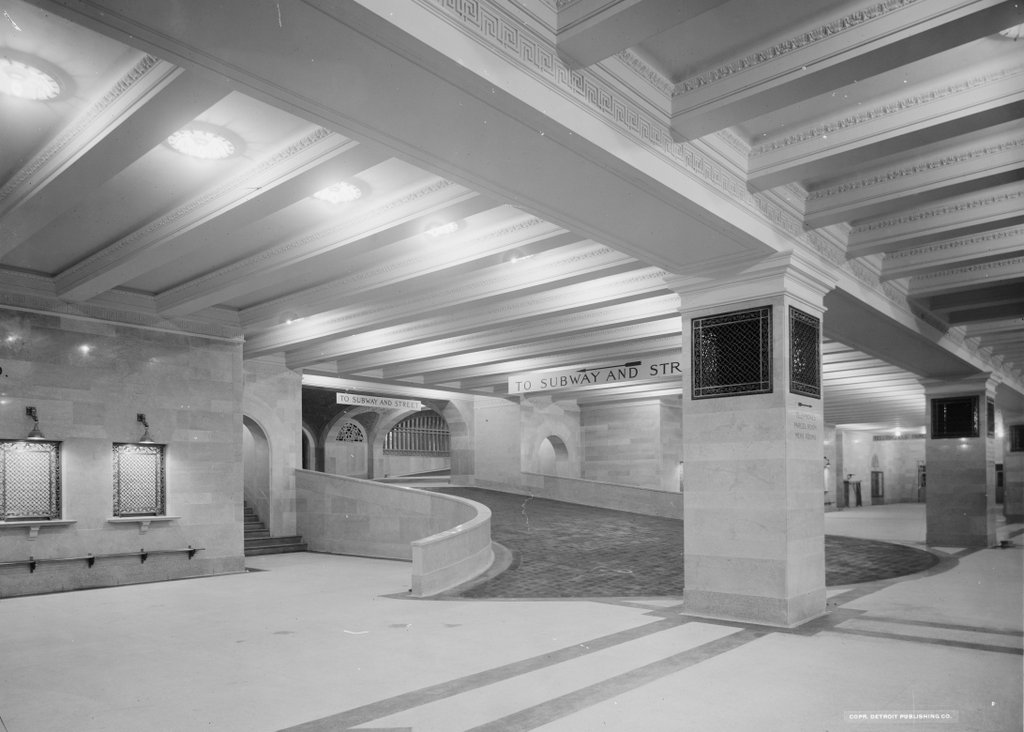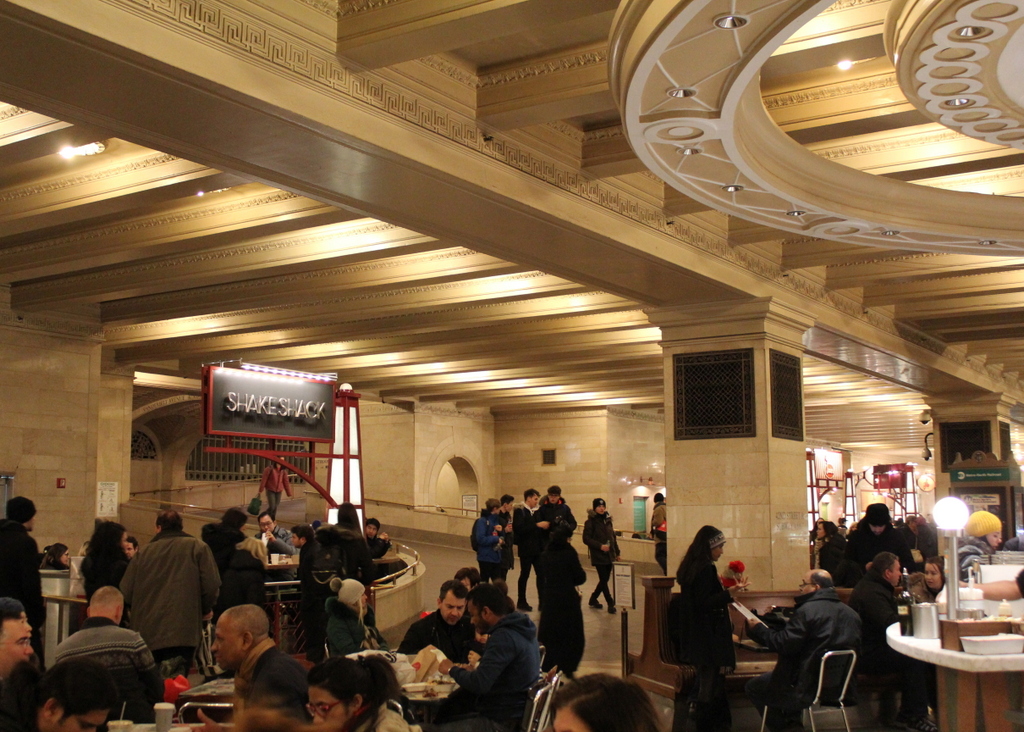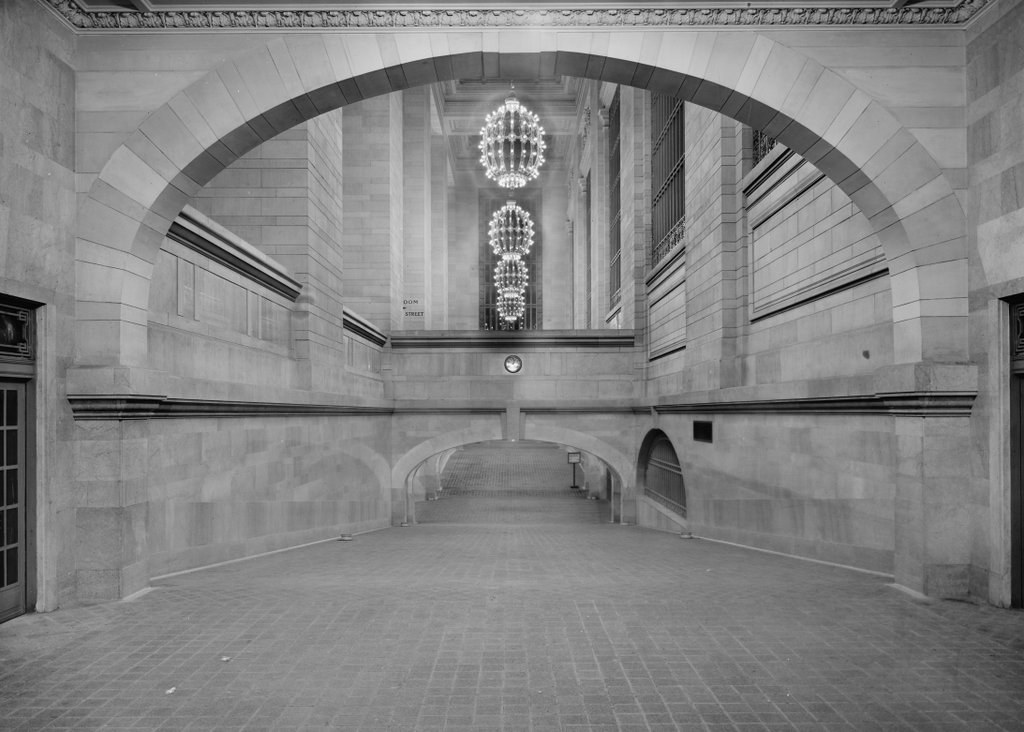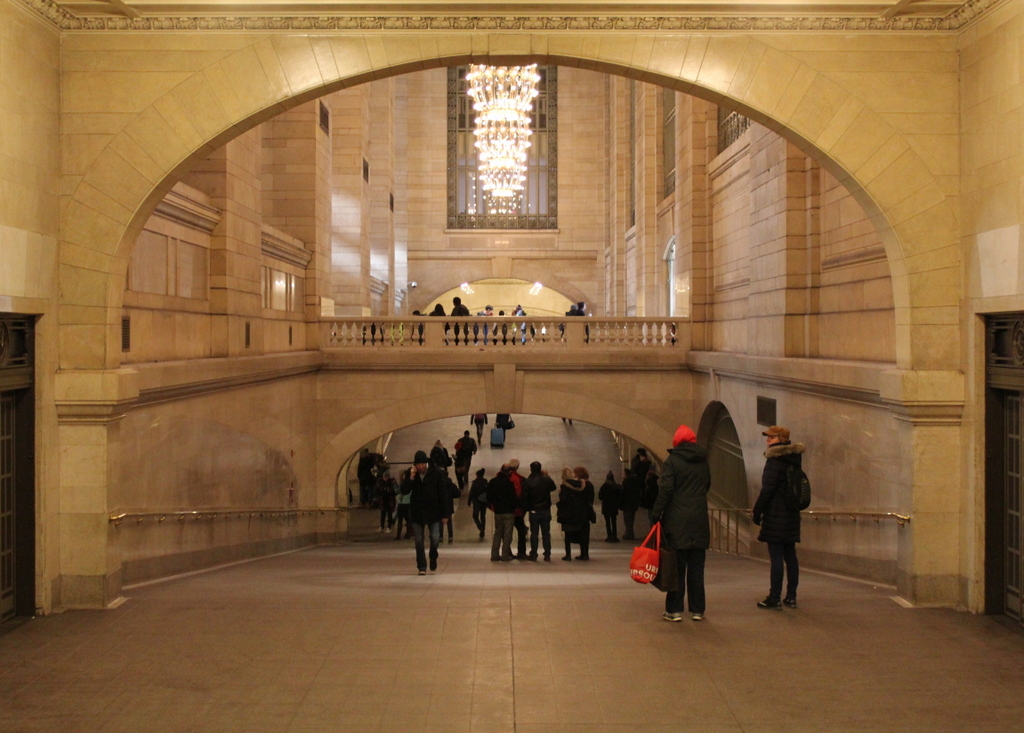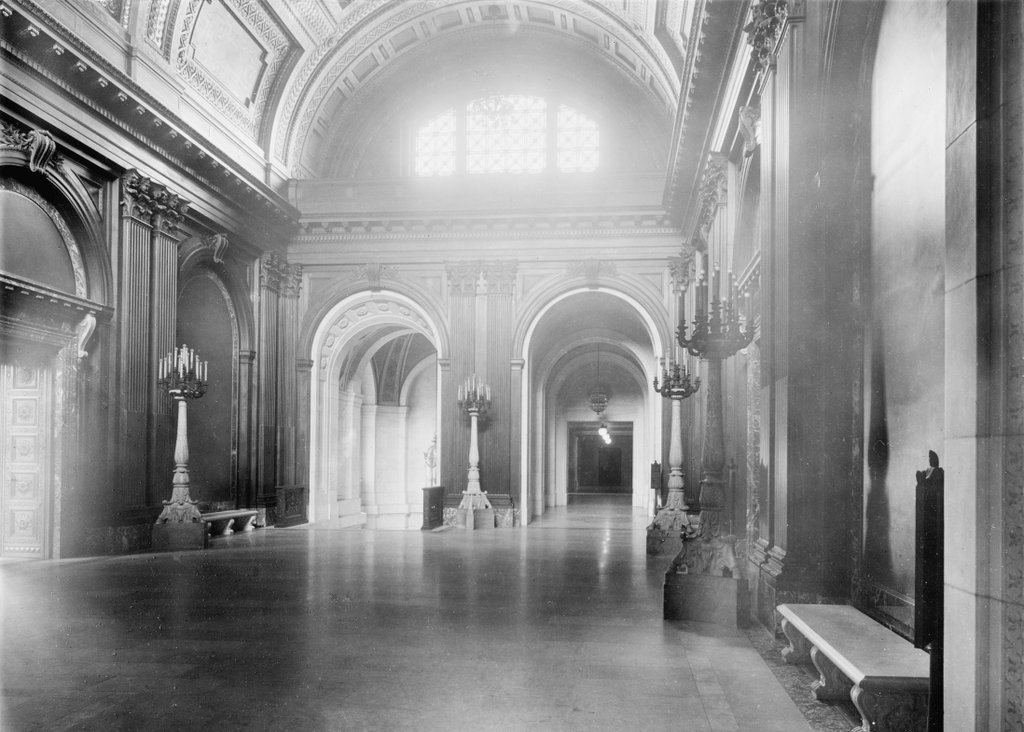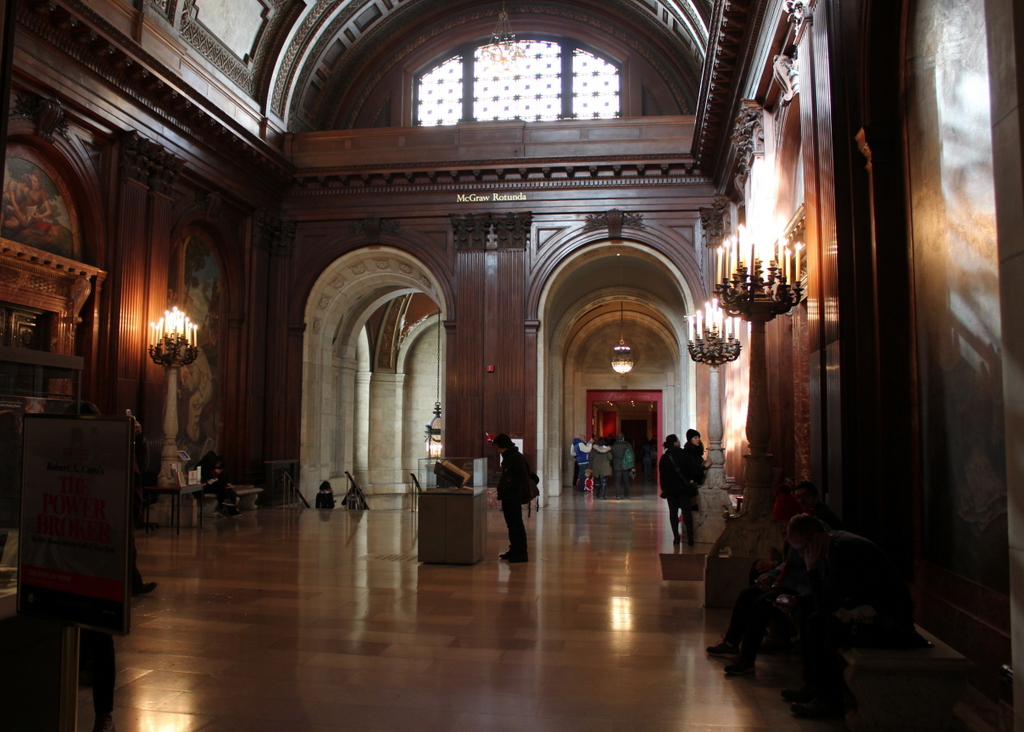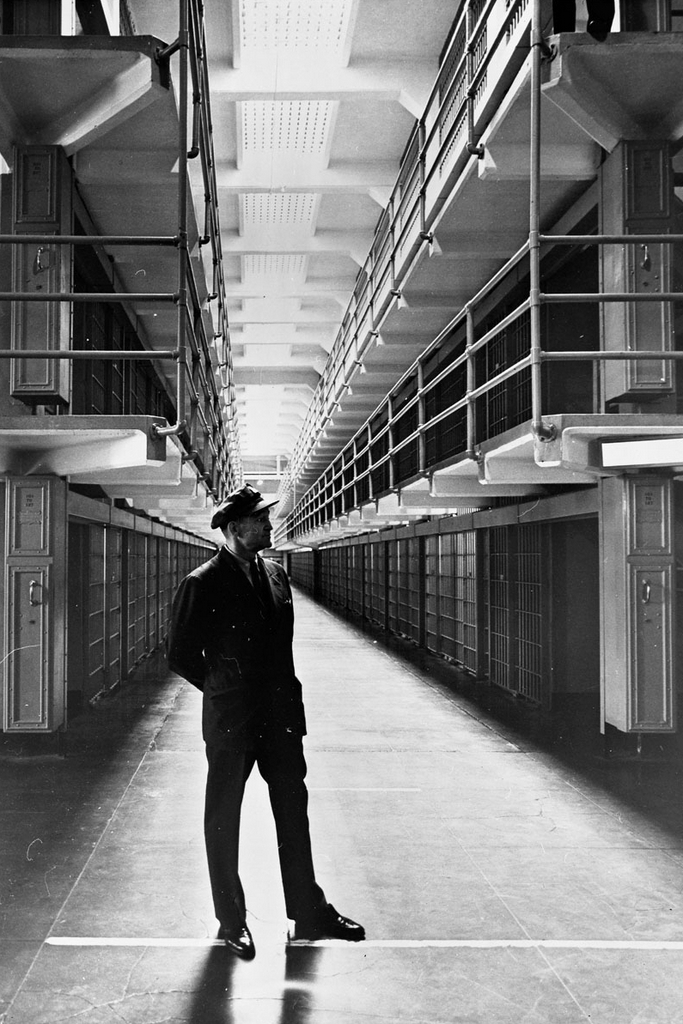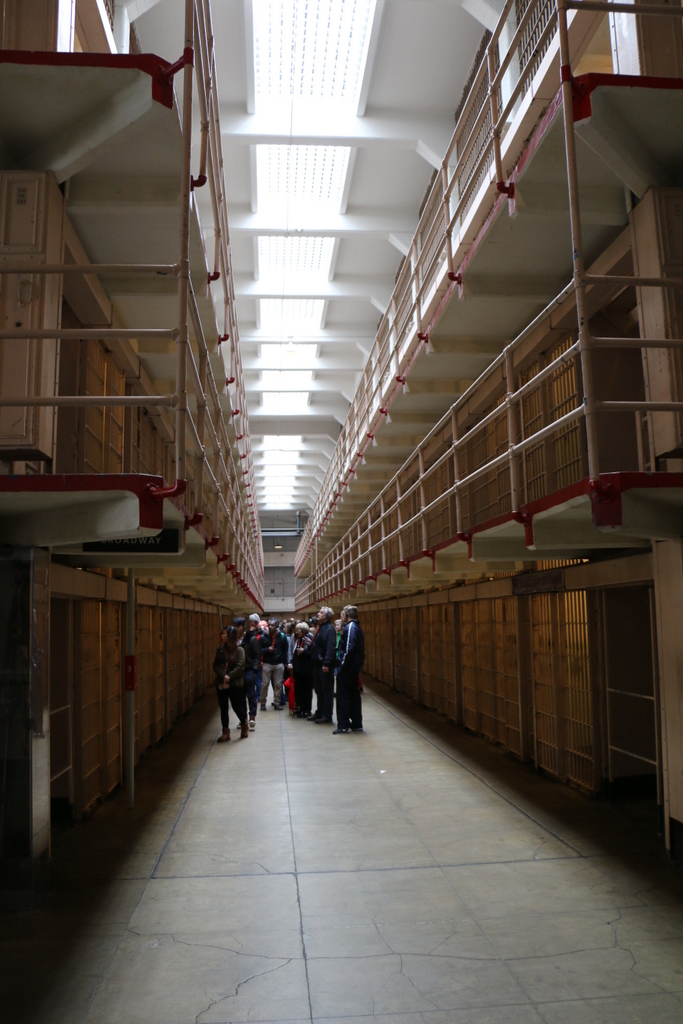The whispering gallery at the bottom of the ramp to the lower concourse at Grand Central Terminal, around 1913-1920. Image courtesy of the Library of Congress, Detroit Publishing Company Collection.
The scene in 2016:
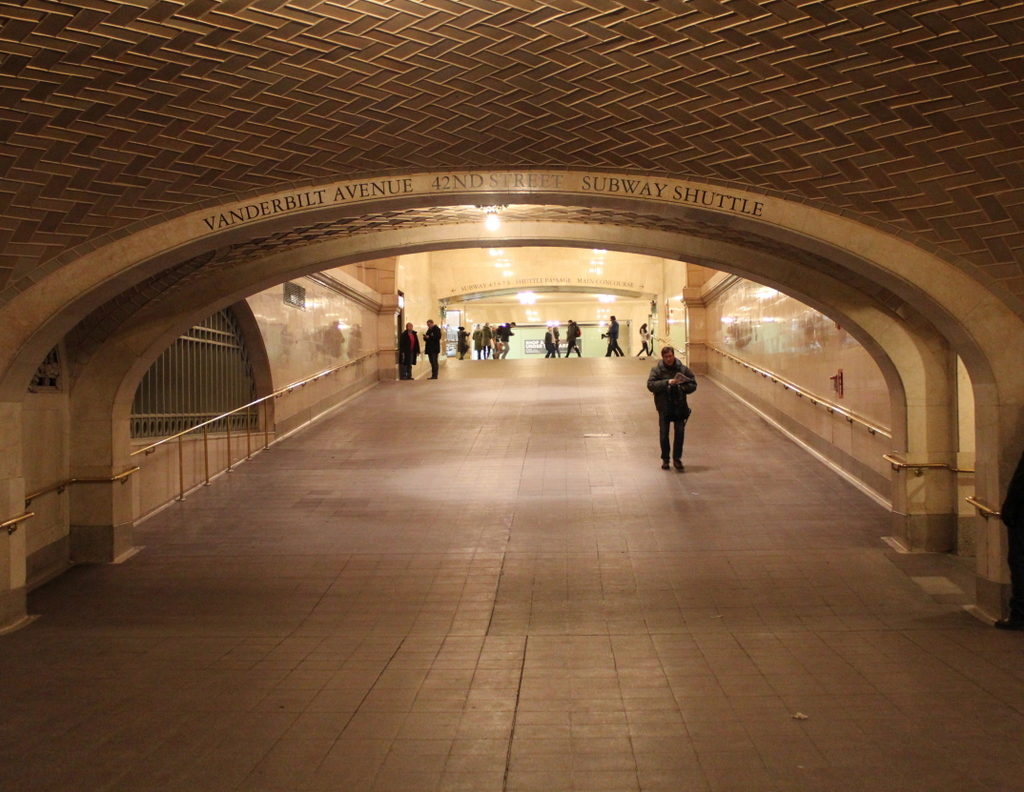
These photos were taken from the bottom of the ramp that is seen in an earlier post, which leads from the Main Concourse to the station’s lower concourse. Because of the curve of the ceiling here, two people can stand facing the walls on opposite corners and speak at a normal level. The acoustics of the ceiling will carry their voices across the arch and the other person will be able to hear them perfectly clearly. That is, in fact, exactly what the person on the far right of the 2016 photo is doing; his friend was standing just out of the frame of the photo on the left side. I don’t know whether it was deliberately designed like that, or if the man in the bowler derby and overcoat in the first photo ever tried it out, but it is one of Grand Central Terminal’s more unusual architectural features.


